The Data
As all the testing in this round-up was performed with the exact same equipment, using the exact same methods I have decided to keep each radiators page uncluttered by posting our testing methodology, test set-ups and equipment used in a single location. To see exactly how the tests were carried out, details of the test set ups and equipment used, please head back to the RRU Test Setup page.
Restriction Test
It’s generally agreed that radiators are one of, if not the least restrictive components in the water cooling loop. There are some exceptions however, so this must still be verified through testing:
The above photo is for referencing the restriction test bench The SR2 is not loaded so please disregard the data in the picture as it does not relate to the its test results.
Here is the raw data at the tested flow rates, displaying the measured Differential Pressure across the radiator as flow rate was increased.
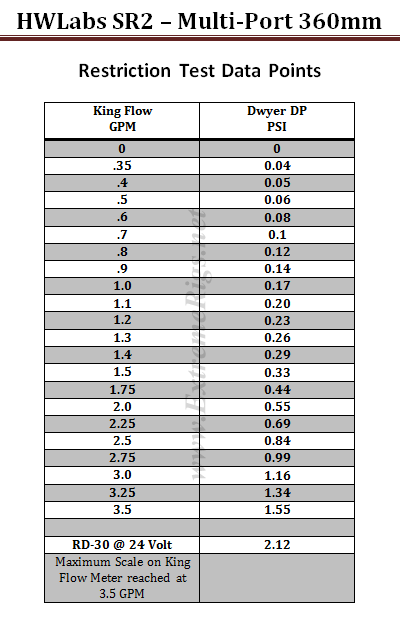 The table numbers indicate that the SR2 is a low restriction radiator. However numbers in isolation can only tell half the story. By plotting against other components it more easily shows the whole story. I have decided to use a HeatKiller 3.0 CPU block as the reference in these plots for two reasons. Firstly there is no chance of the plot being cluttered by curves overlapping and secondly it gives a reference point against a fairly common loop component of average restriction. As with all the radiator restriction plots I have limited the maximum flow rate displayed to 2.0 GPM as I suspect there are very few systems that operate above 2.0 GPM. For more information on how to read a restriction plot check out our guide.
The table numbers indicate that the SR2 is a low restriction radiator. However numbers in isolation can only tell half the story. By plotting against other components it more easily shows the whole story. I have decided to use a HeatKiller 3.0 CPU block as the reference in these plots for two reasons. Firstly there is no chance of the plot being cluttered by curves overlapping and secondly it gives a reference point against a fairly common loop component of average restriction. As with all the radiator restriction plots I have limited the maximum flow rate displayed to 2.0 GPM as I suspect there are very few systems that operate above 2.0 GPM. For more information on how to read a restriction plot check out our guide.
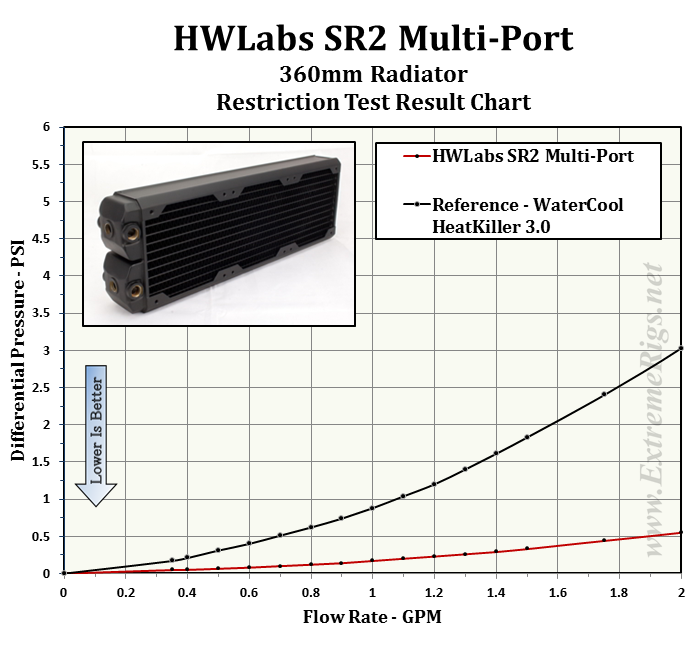 This plot confirms the SR2 as a low restriction radiator, very low I would venture to say.
This plot confirms the SR2 as a low restriction radiator, very low I would venture to say.
The next three plots show the SR2’s restriction level relative to other radiators in the test group. Previously I have only shown just the 1.0 gpm plot, but I have now decided to show 3 different flow rates for you to see how the rad’s restriction levels compare against each other at different flow rates.







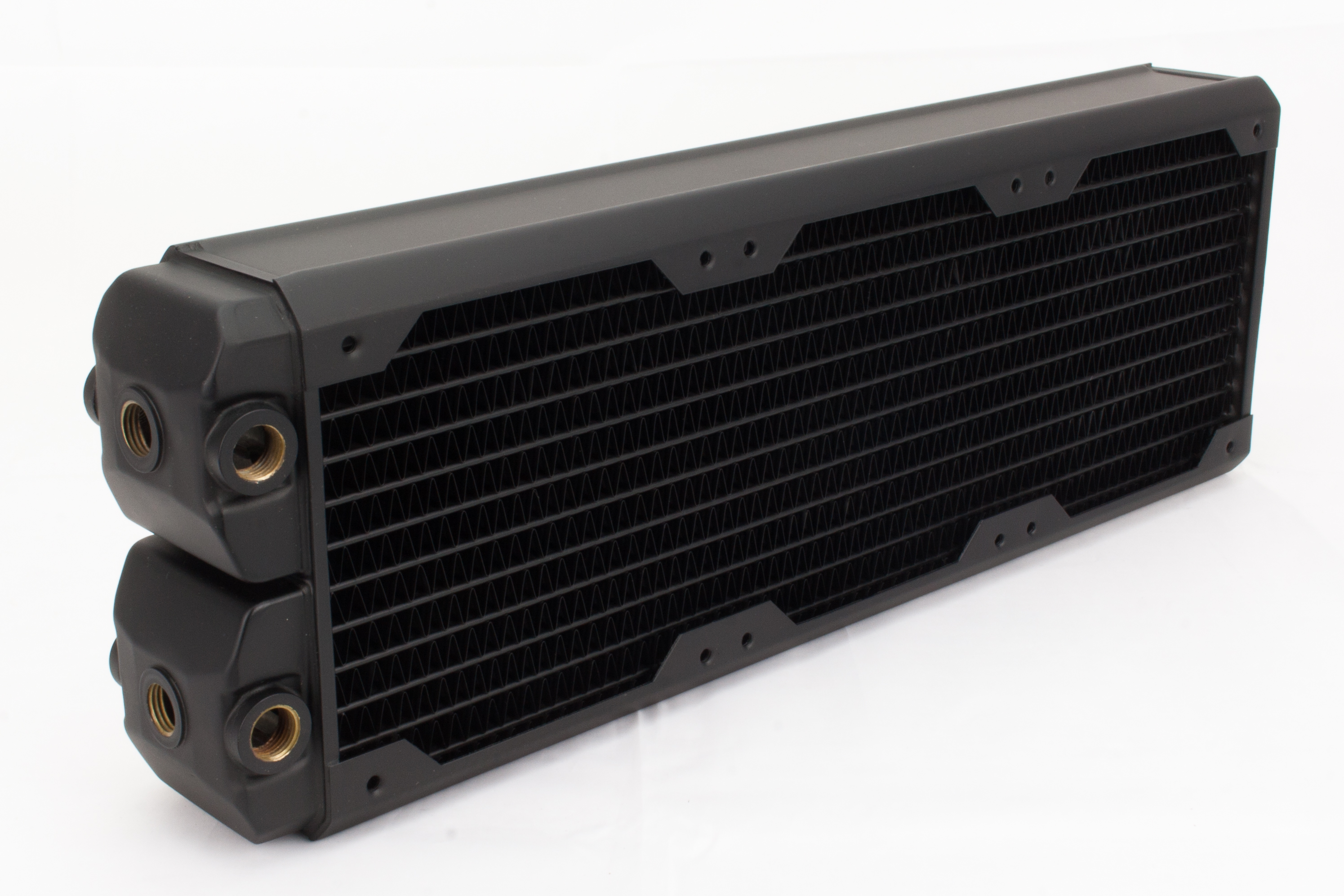
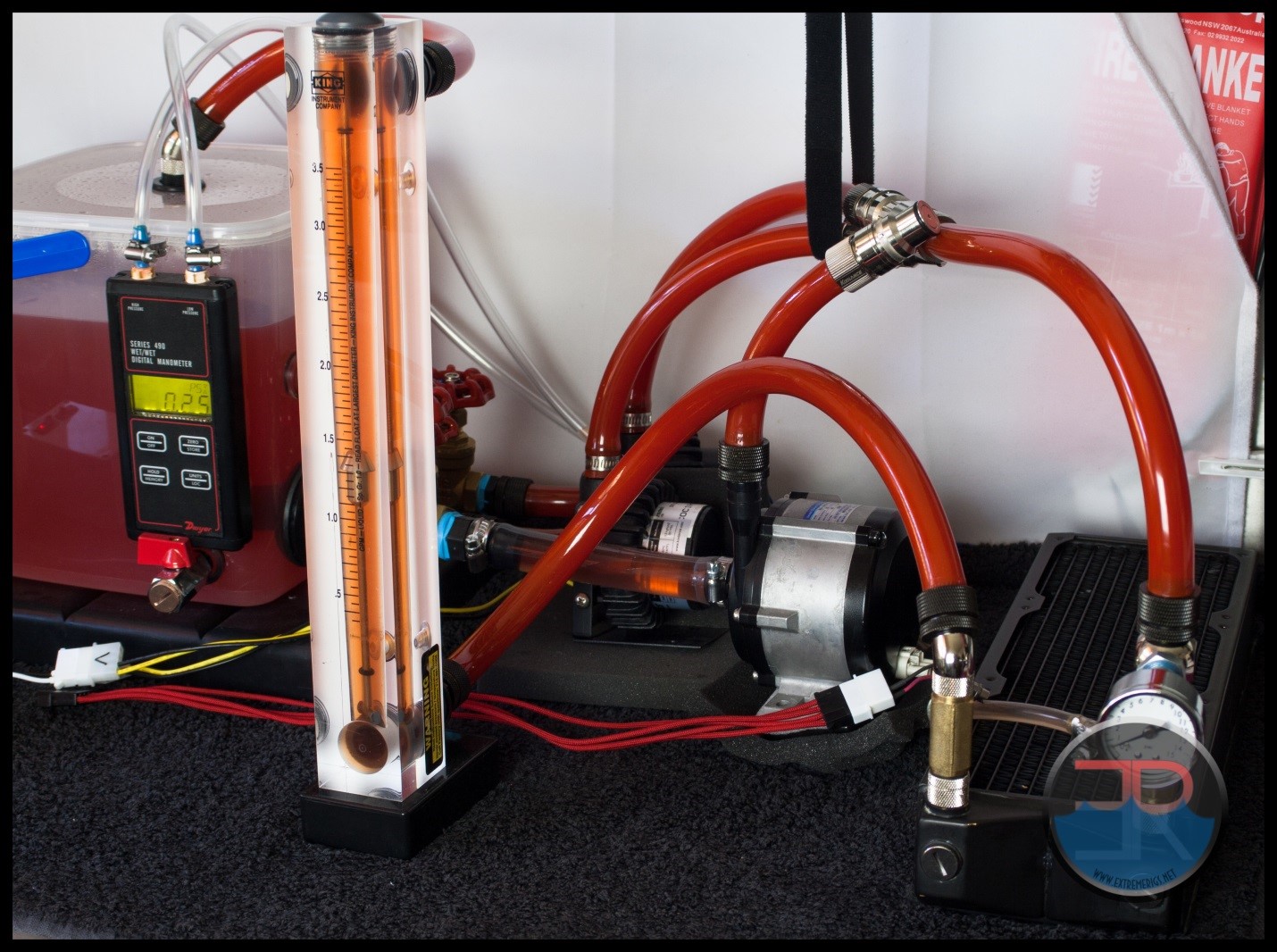
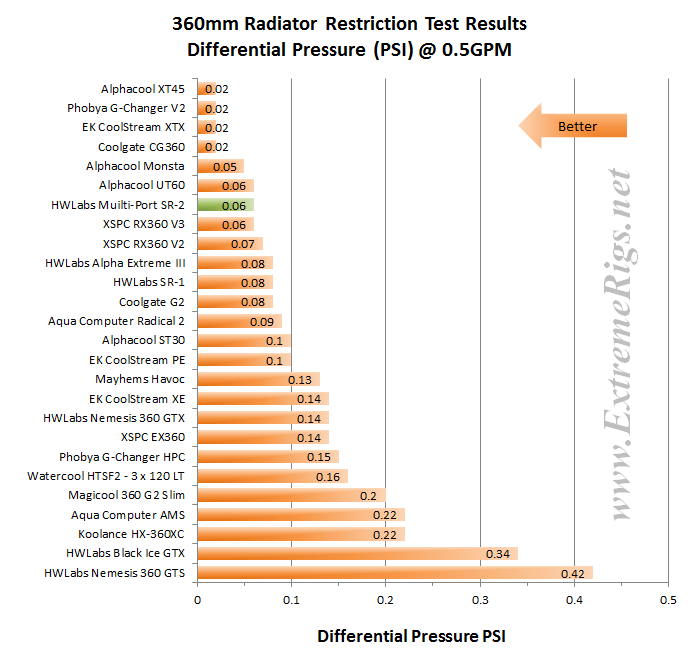
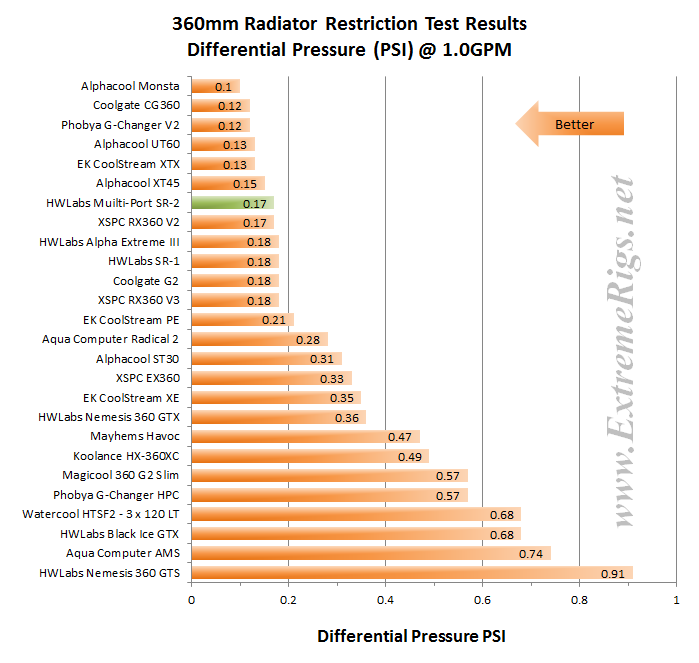
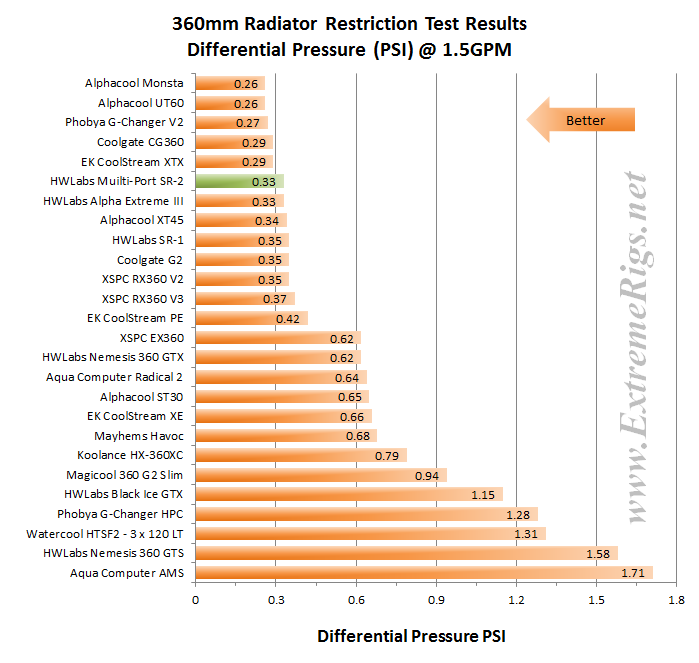



What are these “Opti-flow” versions of radiators? I can find no such variant on Hardware Labs website, only the “XFlow” variety.
Hey Thomas – the “optiflow” refers to radiators where the direction of coolant or airflow matters. “Optiflow” means that the “best” orientation is being tested. It only applies therefore to certain radiators with certain internal structures such as the Nemesis GTX or Black Ice GTX. The SR2 does not have any such directionality 🙂
Also on more thing to add – optiflow significantly helps lower flow rates when air flow is higher. If you run low airflow or high coolant flow then a directional radiator can be more of a pain than a gain.
Ah, thank you!
So between the SR2 and Nemesis GTX which performs better seems to be entirely down to the particulars of your setup then (as the Nemesis seems to straddle the SR2 results with and without opti-flow), will have to reread the Nemesis review as I don’t remember seeing anything about this issue.
Great work, love these reviews and the roundup comparisons (any chance there will be a 140mm variant of it some time too?).
Awesome review thanks for all the hard work!!
Nice review man,
I gotta get me on of this multiport when it comes out 🙂
Awesome review, I really want one too.
Great review as always
[…] Nemesis GTS 360 Radiator Hardware Labs Nemesis GTX 360 Radiator Hardware Labs SR-1 360 Radiator Hardware Labs SR2 360 Radiator Koolance HX-360XC 360 Radiator Magicool G2 Slim 360 Radiator Mayhem’s Havoc 360 Radiator […]
[…] a close look at the SR2 240 MP from Hardware Labs. We took a look a pre-production sample of the 360mm version for the round-up, so if the 360mm size is more your flavor be sure to check out it’s full review […]
If you don’t mind? What advice do you have to offer concerning the first model of SR2 radiator performance as compared to the SR2-MP? Is this simply a feature added change with the same performance? Or an attempt at both adding features while improving performance?
The SR2 and SR2 MP have the same core – there *should* be no performance difference and it should only be additional features 🙂
[…] up is the SR2 420 MP from Hardware Labs. We’ve already reviewed the 240 mm and 360mm versions of the SR2 MultiPort so be sure to check them out after you’ve finished reading this […]
[…] for sub-800 rpm ultra-stealth fans” which proved to be be an accurate statement when we tested the 360mm version earlier in the year. Will the 140mm perform as well ? We’ll find out how it performs and […]
Comments are closed.